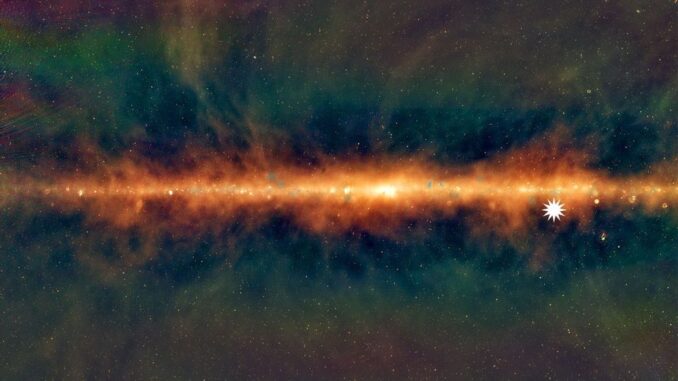
While scanning the skies for cosmic radio signals, astronomers found a mysterious celestial object never observed before that releases bursts of energy three times per hour.
“This object was appearing and disappearing over a few hours during our observations,” said Natasha Hurley-Walker, an astrophysicist at Curtin University and the International Centre for Radio Astronomy Research in Australia. “That was completely unexpected. It was kind of spooky for an astronomer because there’s nothing known in the sky that does that.”
Hurley-Walker, who led a team that published a study about the discovery in the journal Nature, noted that “it’s really quite close to us — about 4,000 light-years away. It’s in our galactic backyard.”
The spinning object was discovered in 2021 by co-author Tyrone O’Doherty of Curtin University using a Murchison Widefield Array (MWA) telescope in Australia after observing the same section of the sky over a 24-hour period. It may be a so-called white dwarf star or neutron star or even many collapsed stars, all of which have an ultra-powerful magnetic field.

Hurley-Walker and her colleagues found that the newly detected object appears to be spinning much more slowly than other magnetars, which could indicate that it has outlived other magnetars that typically last only a few thousand years.
A magnetar is a type of dead star that has burned up its fuel and collapsed into a dense spinning object with a powerful magnetic field. They are typically found only in places where new stars have appeared.
The newly discovered object has been blasting a radiation beam for one minute out of every twenty, making it one of the brightest radio emitters in the sky.
Objects that emit radiation in phases are called “transients.” Co-author Gemma Anderson noted that “when studying transients, you’re watching the death of a massive star or the activity of the remnants it leaves behind.” She said the object being studied is smaller but brighter than our sun and emits highly-polarized radio waves, which means it may have an extremely strong magnetic field.
Supernovae, or exploding stars, like slow transients, become apparent over the course of a few days and then disappear after a few months. Pulsars, or neutron stars, and fast transients release beams intermittently within milliseconds or seconds. Anderson said that finding a celestial object that turns on for a minute is very unusual.

For Hurley-Walker, her team’s observations may mean that they have discovered an ultra-long period magnetar. She described it as a “slowly spinning neutron star” that had only been considered in theory. “But nobody expected to directly detect one like this because we didn’t expect them to be so bright,” she said. The object is converting magnetic energy to radio waves much more effectively than anything previously known, she said.
Hurley-Walker continues to monitor the object with the MWA, hoping to observe it switching back on. “If it does, there are telescopes across the Southern Hemisphere and even in orbit that can point straight to it,” she said.
By reviewing the MWA archives, she hopes to find similar objects. “More detections will tell astronomers whether this was a rare one-off event or a vast new population we’d never noticed before,” she said.
Edited by Siân Speakman and Kristen Butler
Recommended from our partners
The post Don’t Blink: Mysterious Object In Space Surprises Scientists appeared first on Zenger News.






